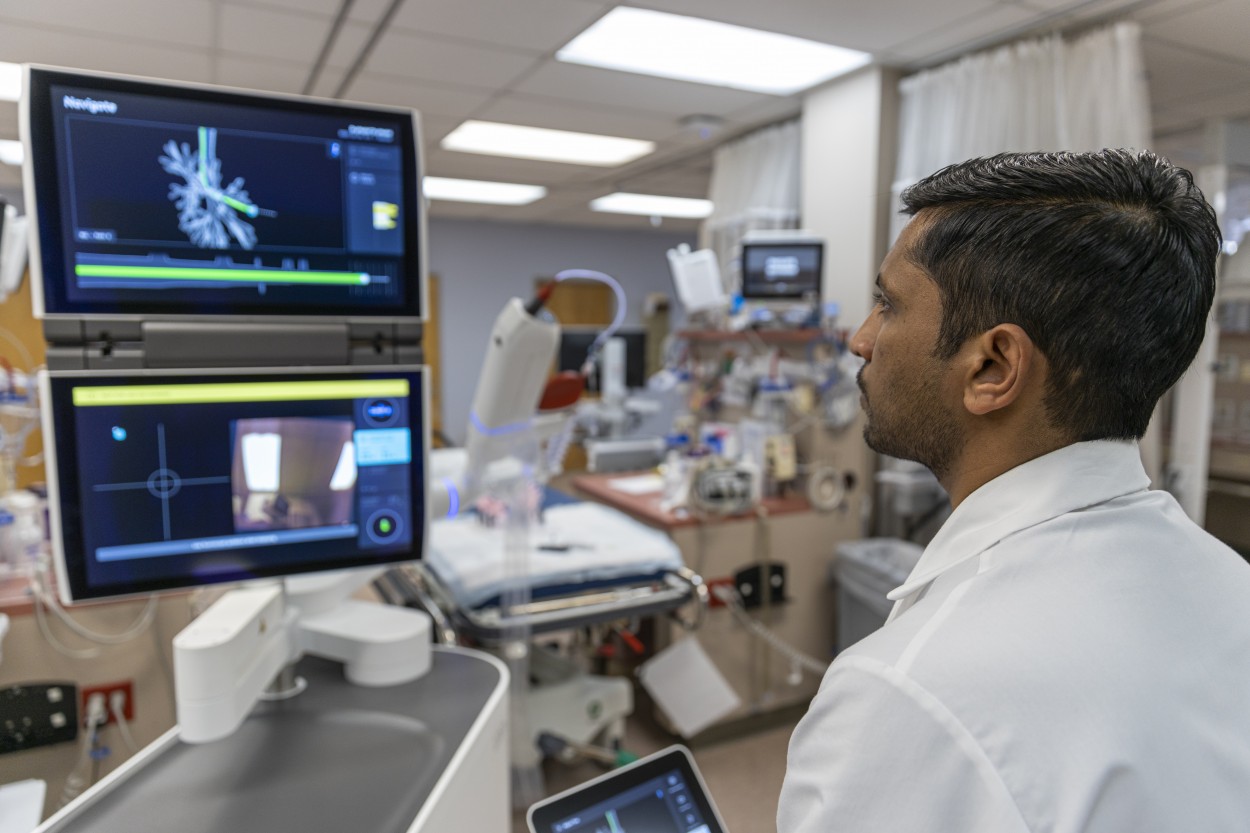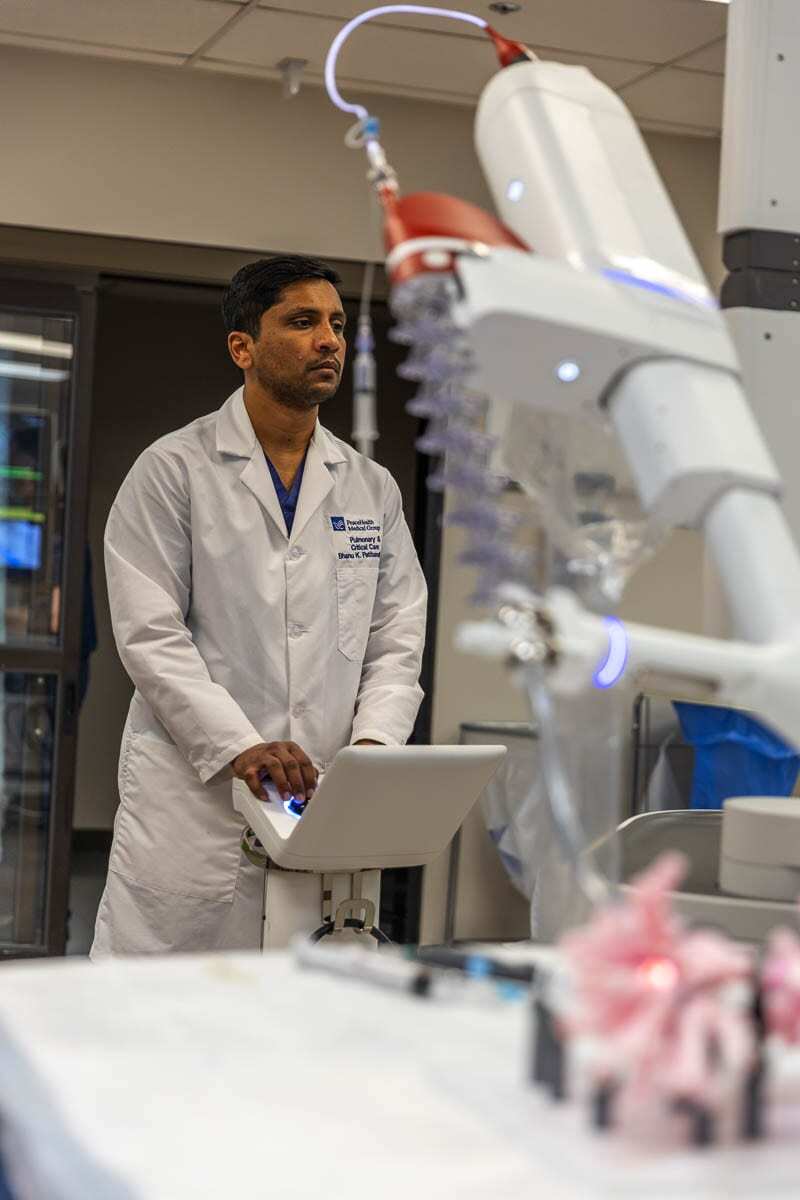State-of-the-art device can navigate through human lungs in out-patient procedure
VANCOUVER —PeaceHealth Southwest Medical center in Vancouver brings cutting edge technology to perform minimally invasive lung biopsy: a robot.
ION- robotic bronchoscopy, was created by Intuitive Surgical, the same company to create the Davinci surgical robot widely-known for performing detailed surgeries on objects as small as a grape.

Dr. Bhanu Patibandla, MD is the Lung Nodule & Thoracic Oncology Program Director leading the robot’s implementation.
“I’m thrilled to announce that we now offer robotic assisted bronchoscopy at PeaceHealth Southwest Medical Center. This is very exciting,” Patibandla said. “Lung cancer continues to be the leading cause of cancer related deaths in the U.S. and early detection improves survival rates. This is a cutting-edge technology to perform minimally invasive peripheral lung biopsy, and is a great addition to our armamentarium to help diagnose lung cancer at early stages.”
ION’s catheter is ultra-thin and ultra-maneuverable with a camera at the tip, allowing access far into the periphery of the lungs like never before and under direct vision. The software that creates 3D map of the airways using CT scan of the lung is very much akin to a GPS system, only appearing to be something subterranean at first glance.

From this 3D airway map, physicians select the best path to go to the lesion, and then using a scroll wheel and track ball, they drive the catheter to the lesion following the navigation based on the pre-selected pathway; much like a video game.
The device’s controls are incredibly precise, allowing the physicians to adjust the catheter tip by a millimeter of movement at a time. Once a site of interest is reached, the catheter can be locked in place, limiting any movement, including the catheter tip deflection that happens with biopsy tools in the prior navigation technologies.
Patibandla can now safely perform biopsies even on lesions smaller than the size of a pea, offering the ability to diagnose lung cancer at earlier stages.
“This procedure also allows us to stage and diagnose lung cancer in one minimally invasive outpatient procedure rather than requiring multiple procedures to arrive at a comprehensive diagnosis,” Patibandla said. “This reduces the delays in diagnosis and treatment, thereby improving the outcomes. Time is of essence in lung cancer care!”
To learn more about the lung nodule program at PeaceHealth Southwest or to schedule a consultation for the robotic assisted bronchoscopy, you can visit their website here.
Dr. Bhanu Patibandla contributed to this report.




